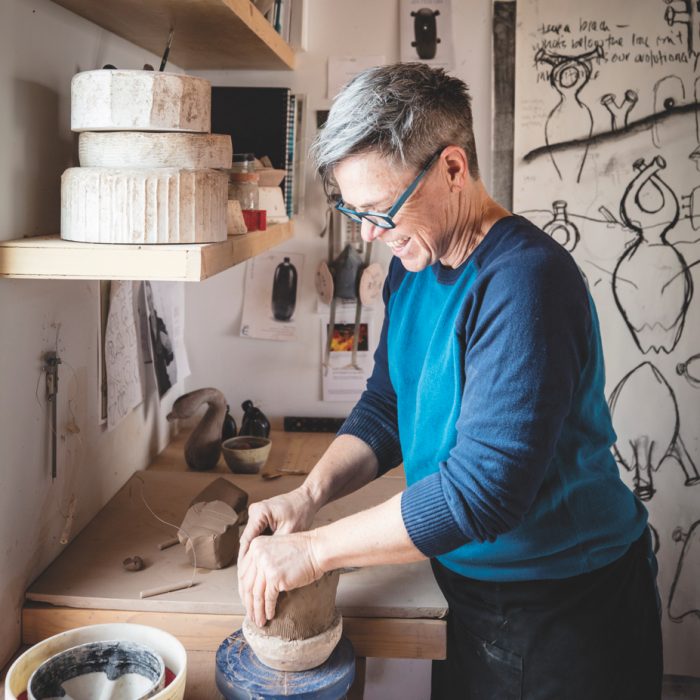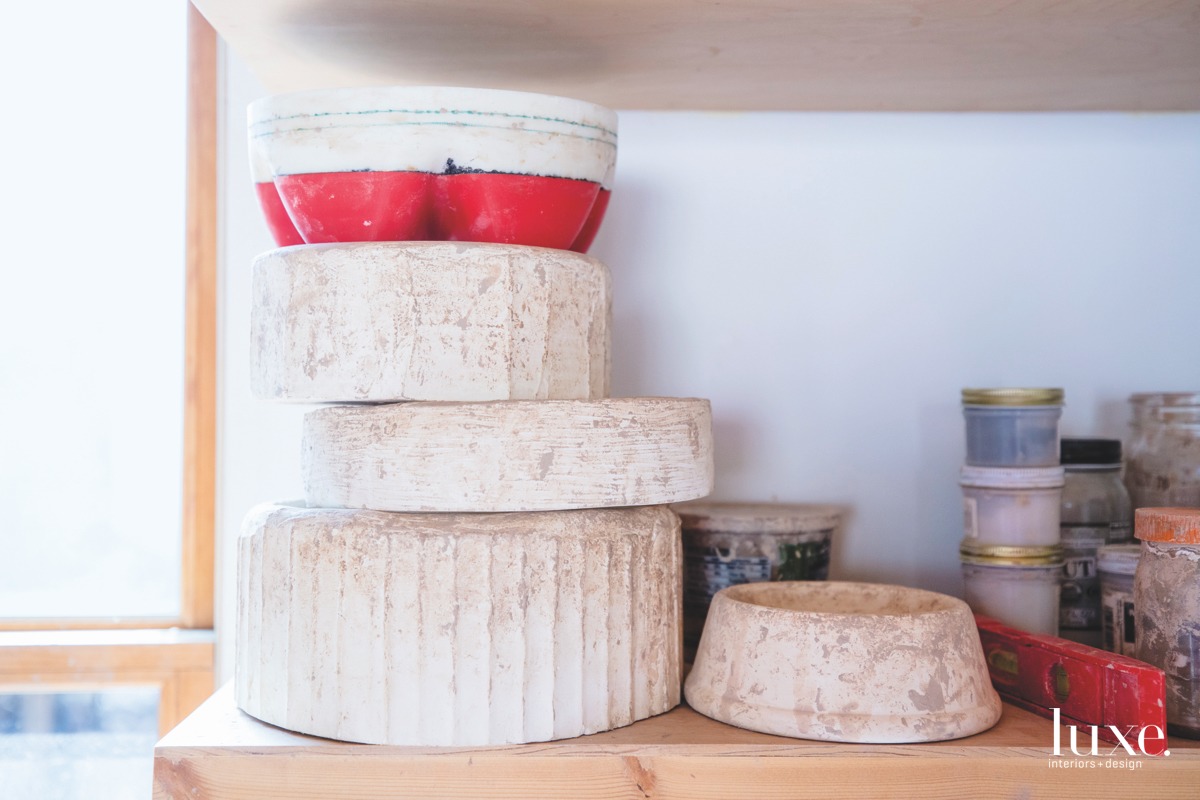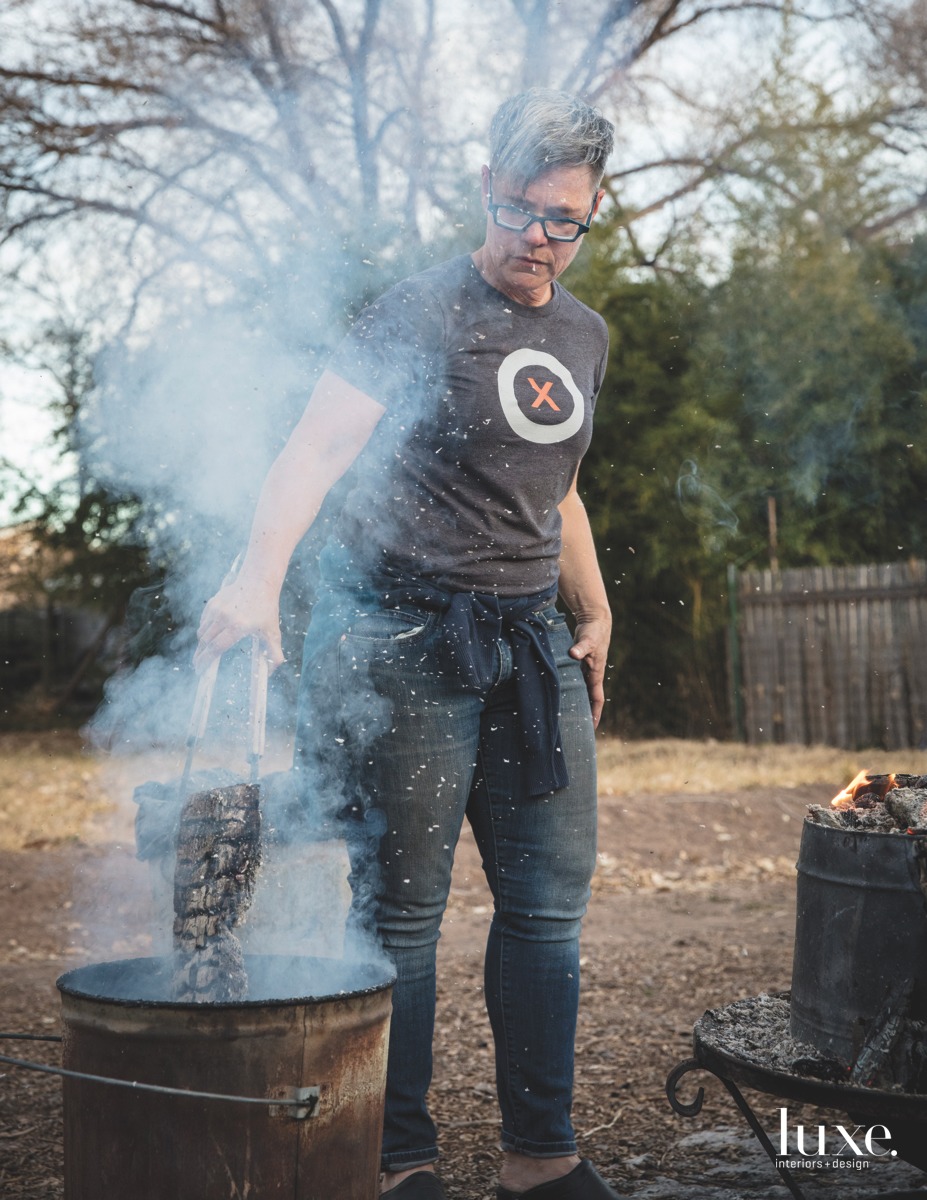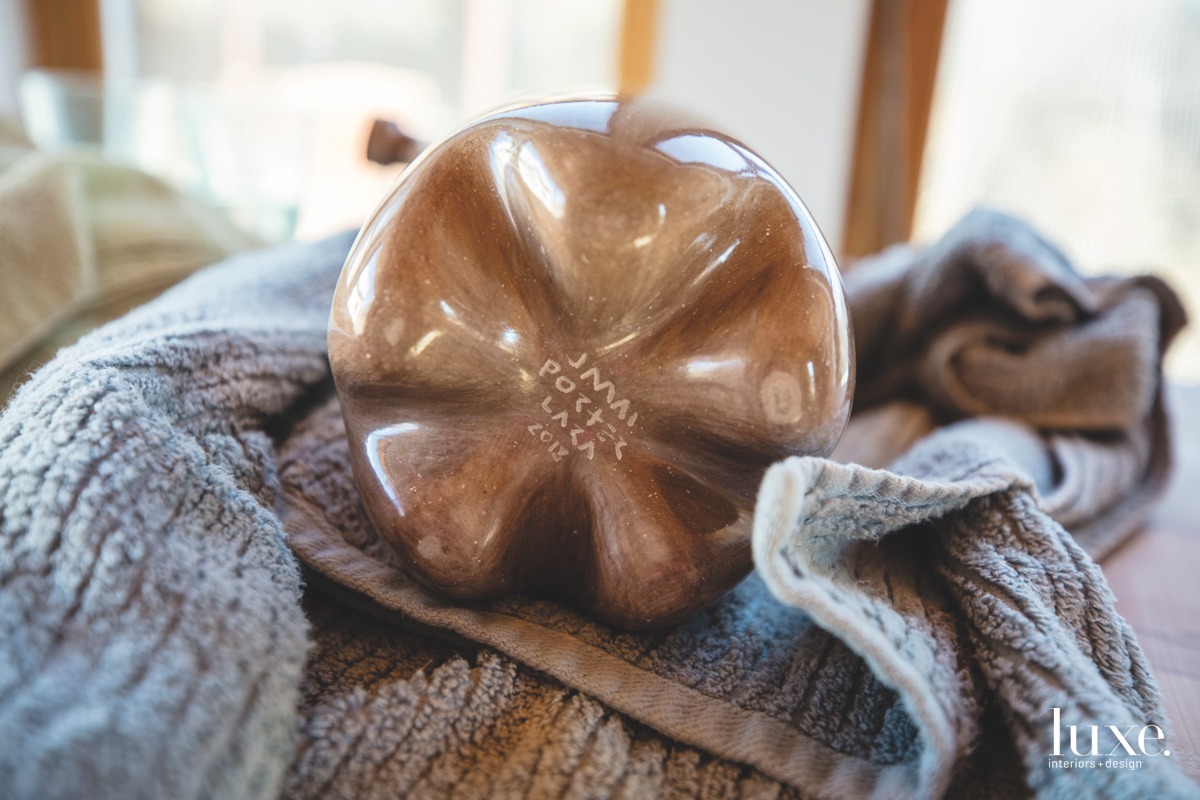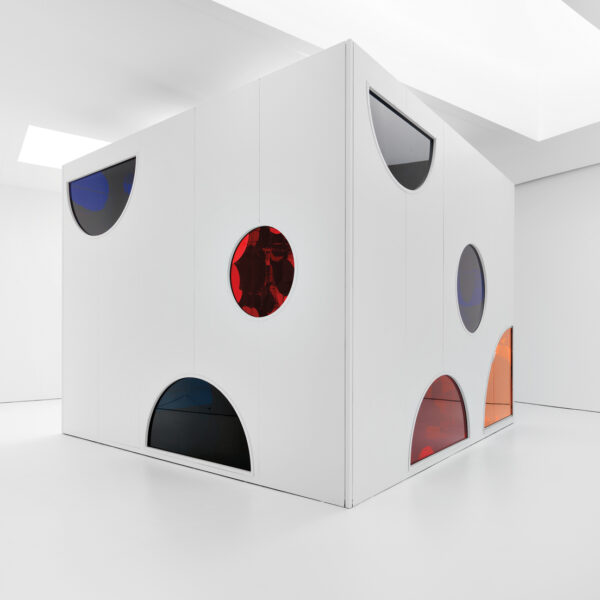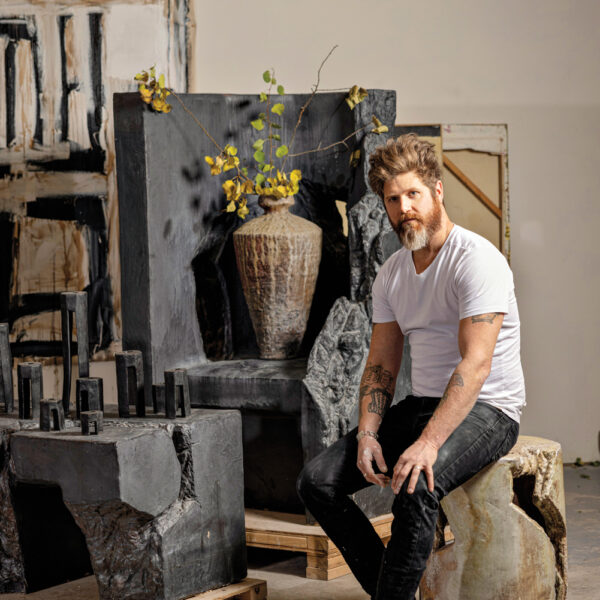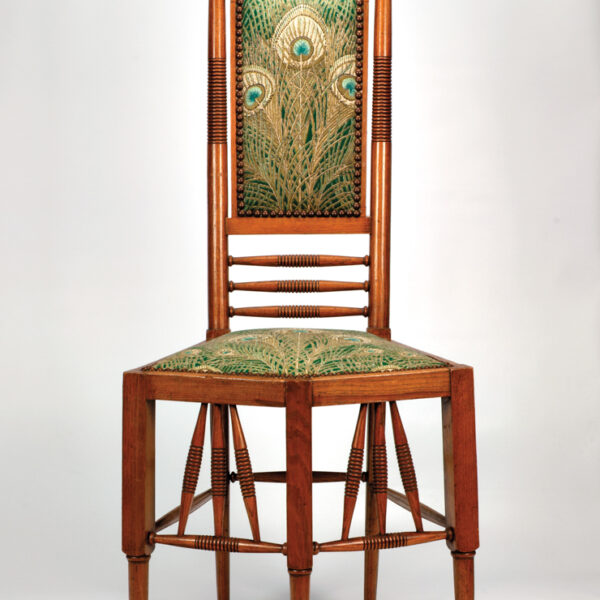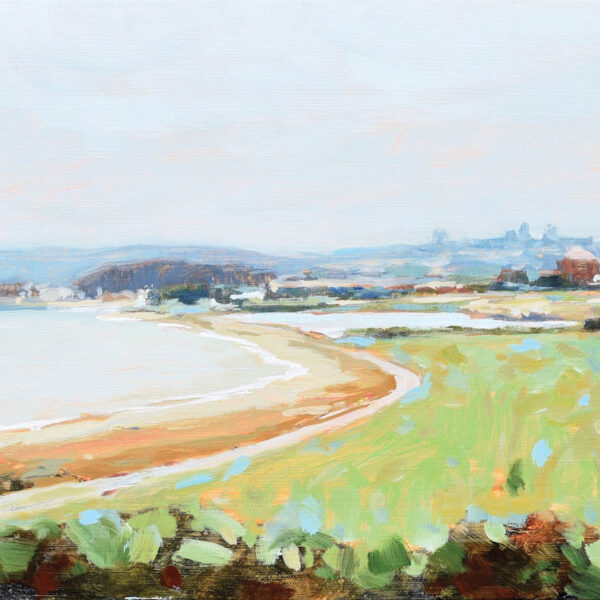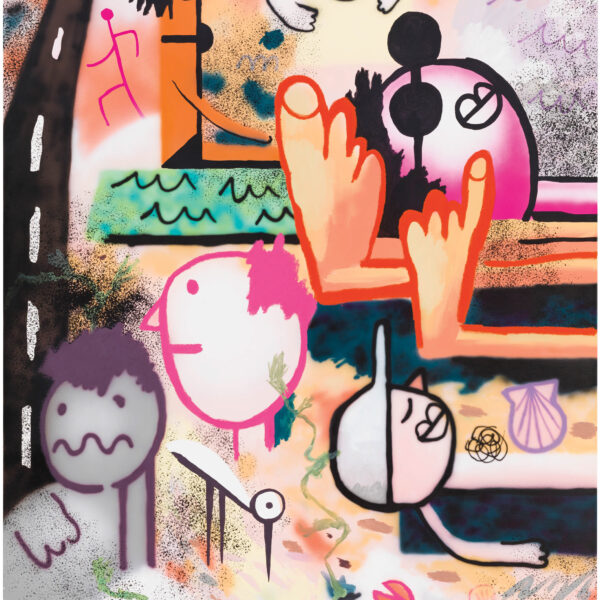It’s difficult to be a ‘thing’ maker in a world of too many things,” says Albuquerque ceramicist Jami Porter Lara. This explains her artistic approach: Using a centuries-old process, she creates sleek and mysterious shapes evocative of ritual objects. Her current series is inspired by plastic bottles left by migrants on the Mexican border. “I saw these bottles as life-sustaining vessels,” she says. “My work is about confronting the most iconic object of my time.”
Porter Lara’s background extends a decades-long investigation of race, class and identity that led to a degree in women’s studies, a role as an advocate for low-income energy programs and a fleeting desire to pursue law. “I’d done so much critical thinking, I was almost paralyzed,” she says. At age 40, seeking a more creative life, she entered the bachelor of fine arts program at the University of New Mexico, where she took a ceramics class and fell for the organic simplicity of clay.
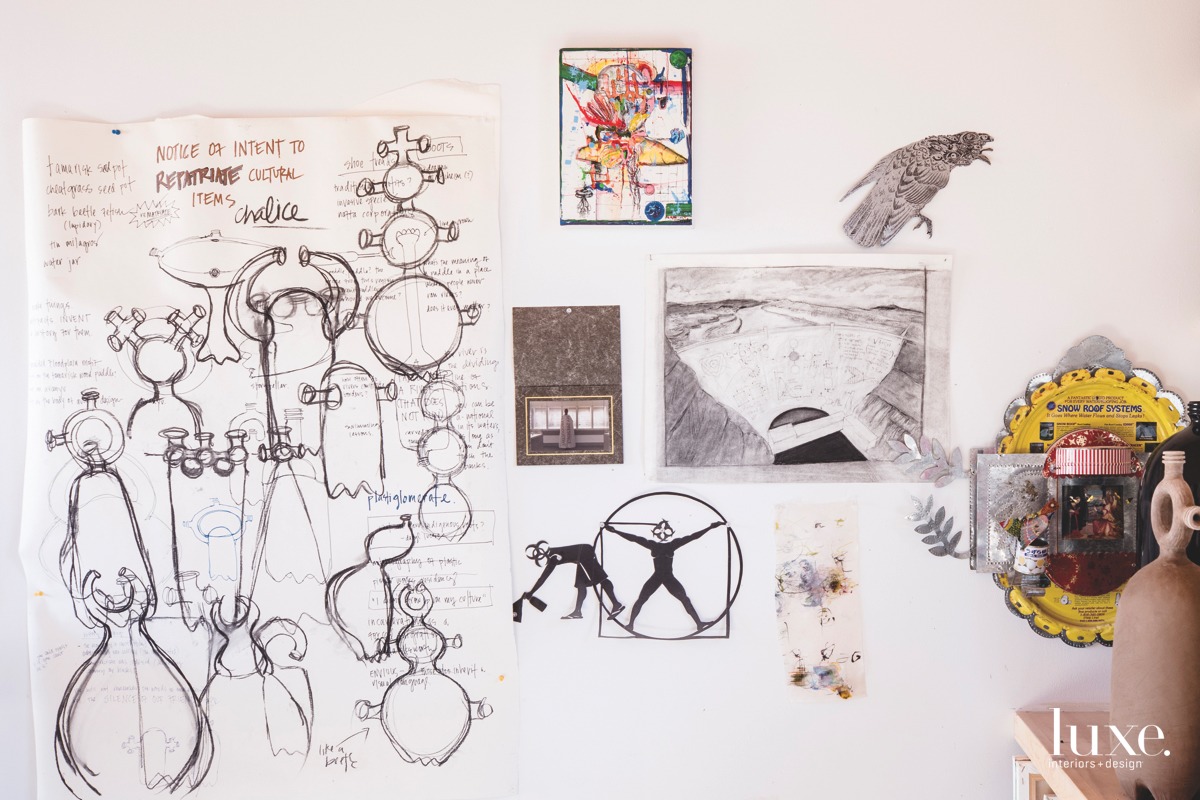
Butcher papers hung across the artist's studio walls replace sketchbooks. "These are my own petroglyph panels," Porter Lara says.

Butcher papers hung across the artist's studio walls replace sketchbooks. "These are my own petroglyph panels," Porter Lara says.
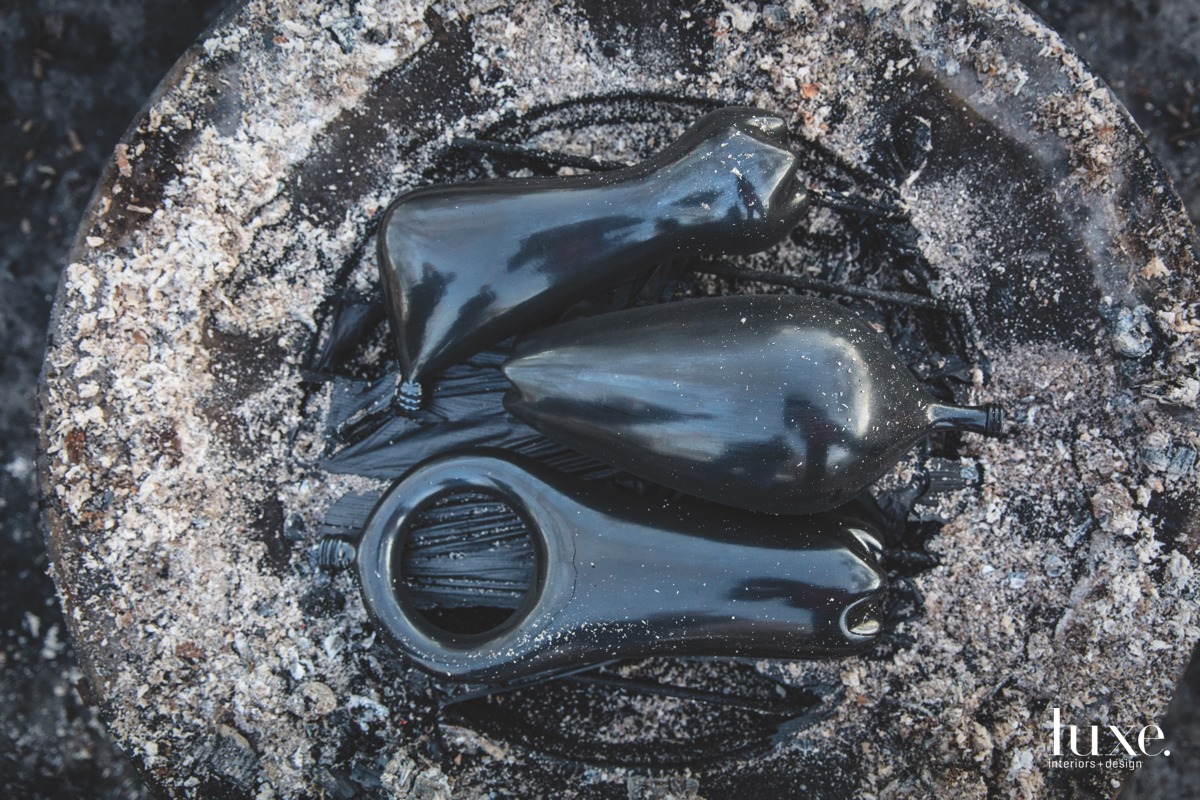
The ideas eventually lead to the firing process, which bonds carbon with the clay and blackens the surface of her creations.

The ideas eventually lead to the firing process, which bonds carbon with the clay and blackens the surface of her creations.
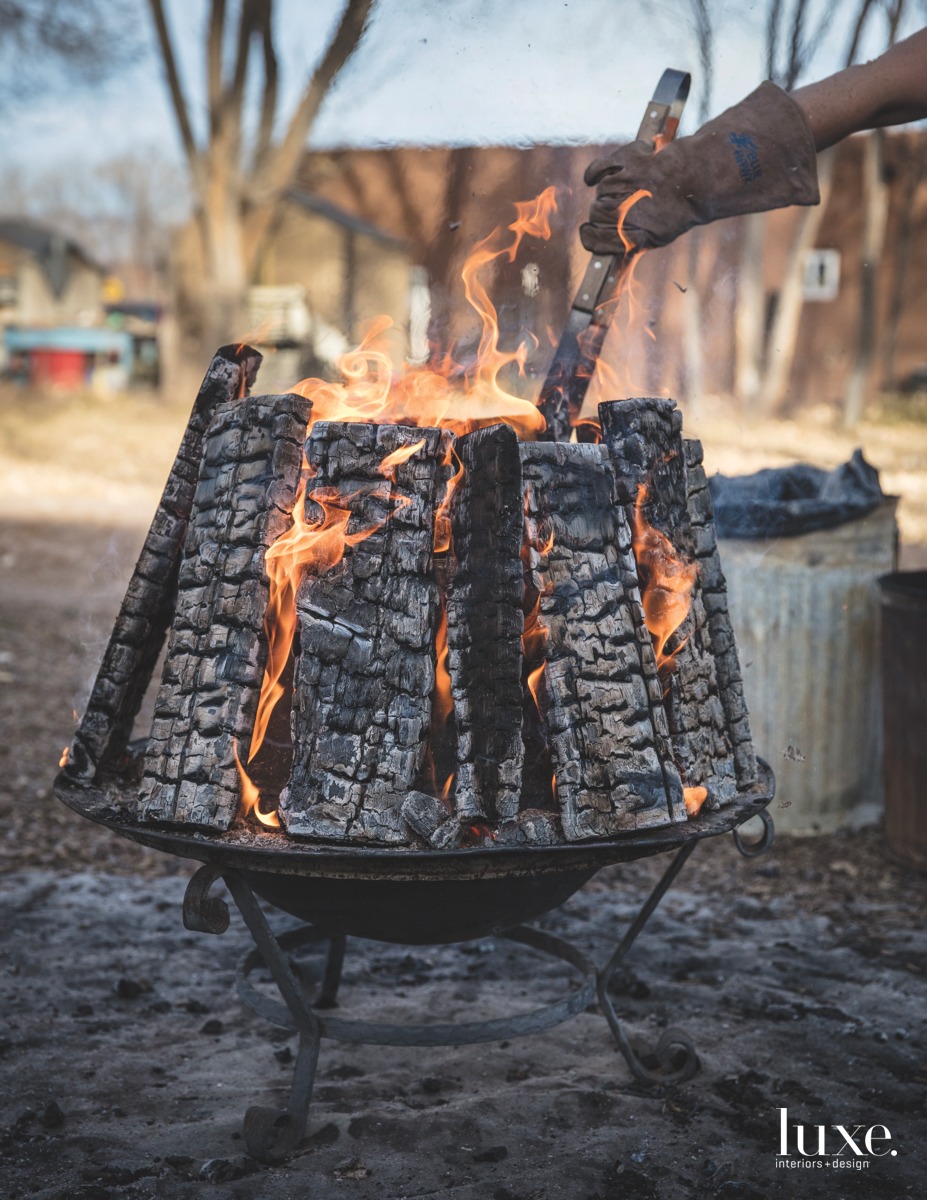
For the fire pits, which are in her backyard, Porter Lara scavenges wood scraps headed for the dump from local construction sites. "Wind is the enemy," she says.

For the fire pits, which are in her backyard, Porter Lara scavenges wood scraps headed for the dump from local construction sites. "Wind is the enemy," she says.
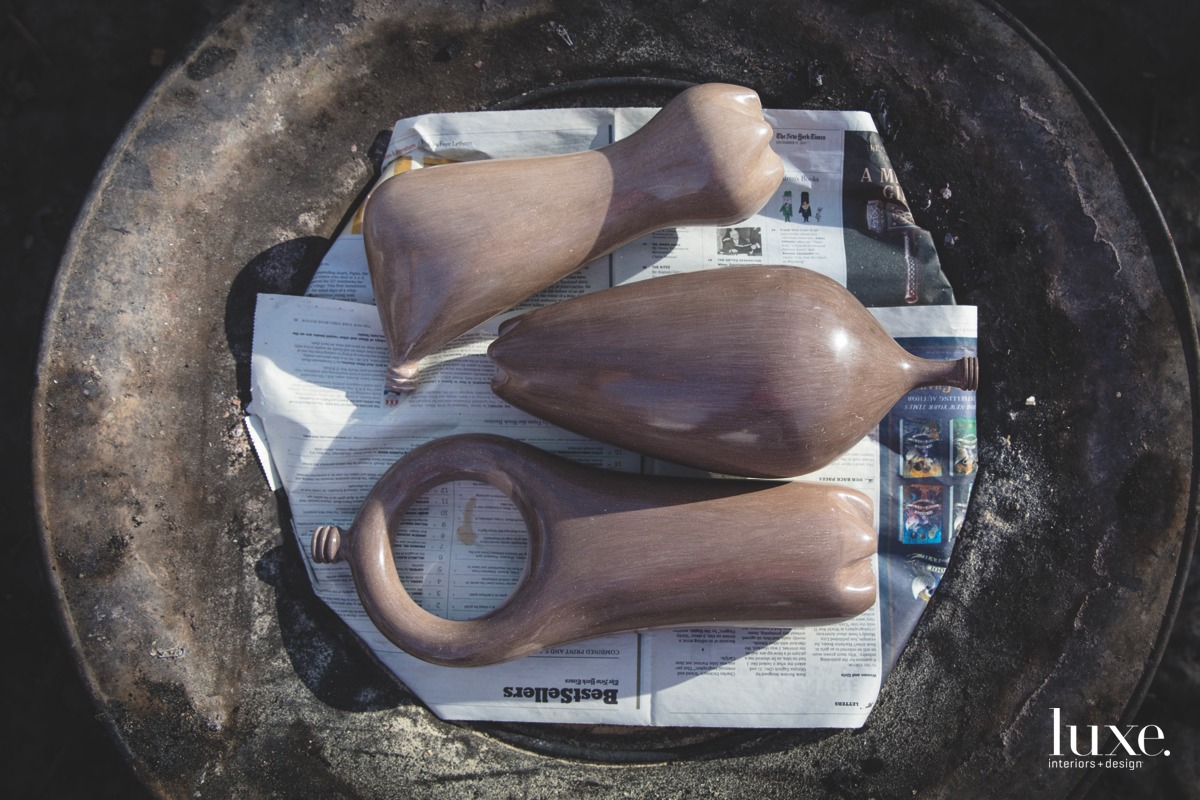
Her current series is inspired by plastic bottles; 2-liter bottles were used to create molds for the base of the work.

Her current series is inspired by plastic bottles; 2-liter bottles were used to create molds for the base of the work.
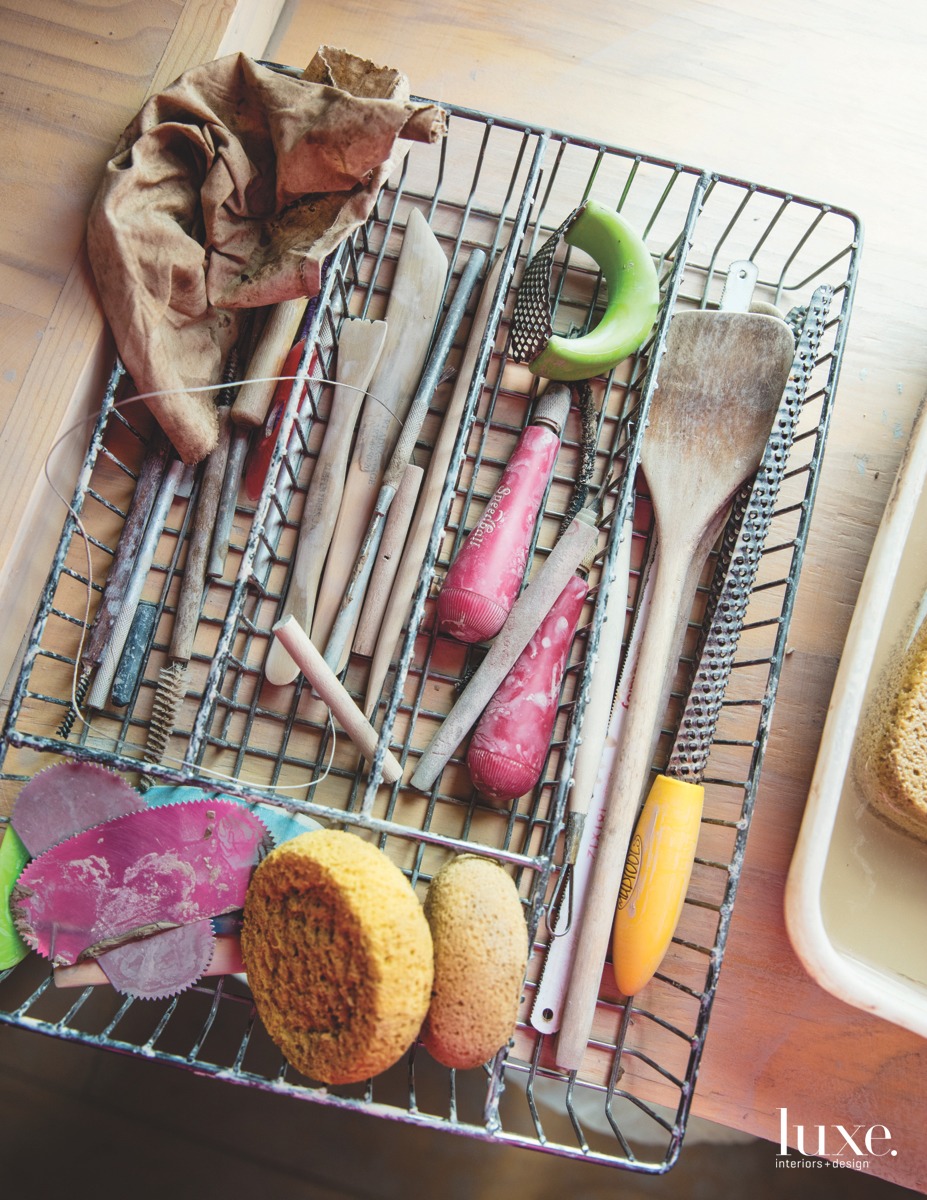
Jami Porter Lara uses a range of tools to sand her vessels, which are made of clay she hand-digs from an arroyo.

Jami Porter Lara uses a range of tools to sand her vessels, which are made of clay she hand-digs from an arroyo.

Ceramic vessels crowd the shelves in the Albuquerque studio of artist Jami Porter Lara.

Ceramic vessels crowd the shelves in the Albuquerque studio of artist Jami Porter Lara.
Post-graduation, Porter Lara continued to refine her process in a tiny backyard studio she designed and built with her partner, Kathy Brown. Just 160 square feet, the ode to economy is clad in wood repurposed from shipping pallets. Light streams through recycled windows, illuminating sheets of butcher paper, which function as landing strips for incoming ideas, sketches and inspiration.
Acknowledging her anxiety about the effects of human impact on the planet, Porter Lara engages in an artistic ritual of reuse and reclamation that begins with a connection to nature. Following an ancient technique learned in the Mexican village of Mata Ortiz, she begins each piece with a 5-gallon bucket of hand-dug arroyo clay. “I use a pick to hack it out of the earth,” she explains. The artist re-hydrates, filters and drains the clay before “wedging” it to remove air bubbles, then hand-builds from long noodle-shaped coils. Using metal scrapers, bamboo forks, spoons and sandpaper, she blends away the lines, creating a uniform surface. In a final round of burnishing, a round rock and plenty of muscle create a rich brown surface sheen. “It’s physical work,” Porter Lara notes.
The labor continues as the artist scavenges scrap wood from local construction sites to fuel a daily backyard bonfire. “I do everything I can do to a piece, set it on fire and see what happens,” she says. During the “reduction” firing process, carbon released from sawdust and dried cow dung bonds to and blackens the surface of the clay objects. “When the pieces emerge from the fire, they’re finished,” Porter Lara says. “There’s no glaze.”
By combining this 2,000-year-old process with the iconography of the plastic bottle, the artist compels viewers “to recognize that the bottle belongs to the long human history of functional vessels we use to contain and transport the necessities of life,” she says. In this way, she adds, viewers can reflect on what they leave behind.
Over time, Porter Lara’s vessels have become more figurative, a merge of the material and human. Lately, she has been experimenting with lace draping, in which porcelain is used to create tactical armor. “There’s this perception of fragility,” she says of the material. “But it’s actually stronger than clay.”
In only eight years, Porter Lara’s work–sold at Peters Projects in Santa Fe and Simon Breitbard Fine Arts in San Francisco–has shown in venues like the National Museum of Women in the Arts in Washington, D.C., and the Museum of Contemporary Art in Los Angeles. As for her worry about being a thing-maker, “the clay is low fire,” she says. “It will go back to the earth with ease.”

